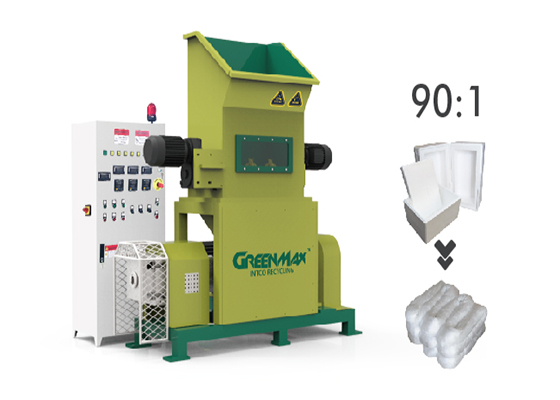A foam densifier is a specialized piece of equipment designed to process and recycle EPS/Polystyrene packaging waste. These machines help reduce the volume of EPS foam by compacting it, making it easier and more cost-effective to transport and recycle.
The typical process of a Polystyrene packaging recycling machine involves the following steps:
Collection: Gather the EPS packaging waste from various sources, such as industrial facilities, businesses, or residential areas. The collected EPS should ideally be clean and free from contaminants like food residues or other materials.
Shredding: The EPS waste is fed into the recycling machine, where it undergoes shredding or granulation. This process breaks the EPS foam into smaller pieces, increasing its surface area and making it easier to process further.
Melting and Densification: The shredded EPS is then heated in the machine, causing it to melt. Some machines use heat and pressure to densify the EPS, while others use a screw mechanism to compress the molten EPS, reducing its volume significantly.
Extrusion and reuse: After densification, the molten EPS is extruded through a die to form denser blocks or ingots with a reduced volume. These compacted blocks are easier to handle and transport to recycling facilities. The extruded EPS blocks are then cooled and solidified, forming stable and recyclable materials. The compacted EPS blocks are ready for storage or transportation to manufacturers that can use them as raw materials in various applications, such as picture frames, moldings, and other plastic products.
